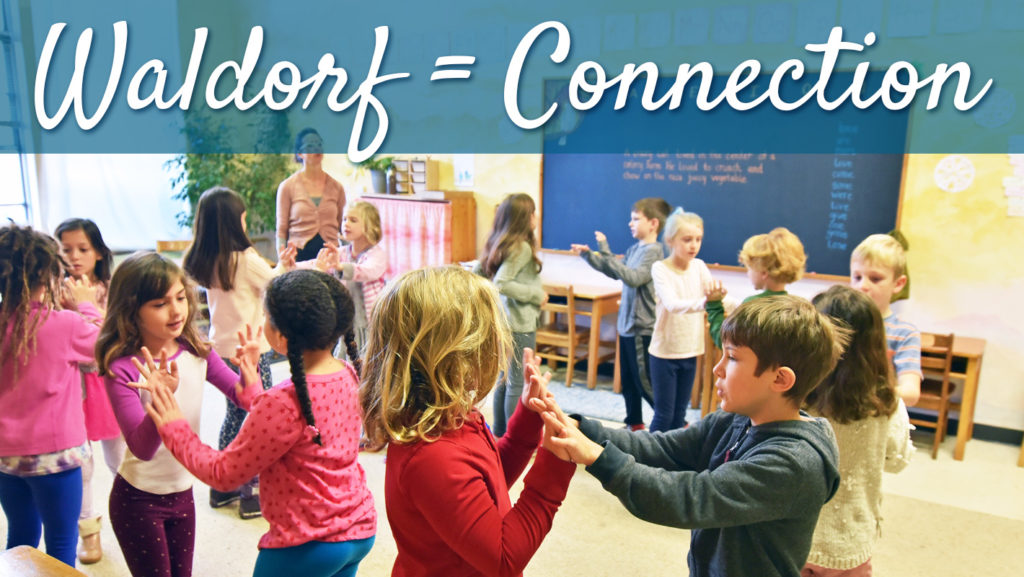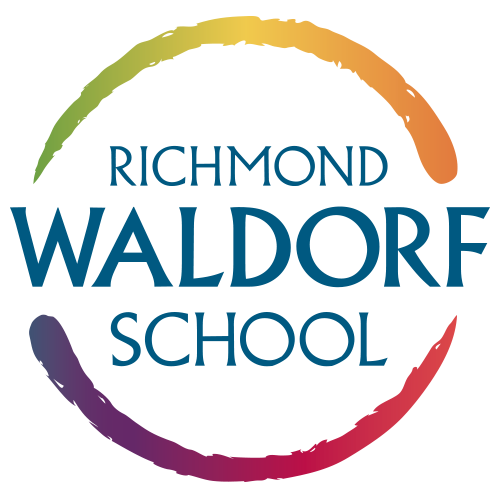Waldorf = Connection

Waldorf educators foster a learning environment that is designed to meet the unique needs of each individual student in the class. In this environment, students cultivate a deep connection to learning and to their classmates. The Class Teacher takes an artistic and holistic approach to teaching. For instance, in the lower grades, subjects are blended so that it is hard to tell where math ends and music begins. We meet the needs of the whole child by building connections between subjects and by connecting academic learning to movement, social skills, and art.
In the image above, students are learning times tables. A student will touch her head and say “three”, cross her arms and say “times”, put her arms down and say “four”, then cross her legs and turn to meet her partner. The student will clap hands with her partner and say the answer. The class goes through the whole multiplication table in this way. They are working on movement and using their bodies to help memorize the table. The teacher will then present multiplication in several ways to reach the needs of each child. The class will sing them, move with them, clap to them, write them, jump to them, and make patterns with them. By presenting math in this way, the students form connections with music, movement, language, art, and each other.
As the founder of Waldorf Education, Rudolph Steiner said, “The heart of the Waldorf method is the conviction that education is an art – it must speak to the child’s experience. To educate the whole child, his heart and will must be reached as well as his mind.”
Learn more about the Waldorf approach by visiting our school. Our next interactive Open House, Windows Into Waldorf, is on Saturday, January 26, 2019 at 10:00 am. Join us to experience this unique approach to learning.
